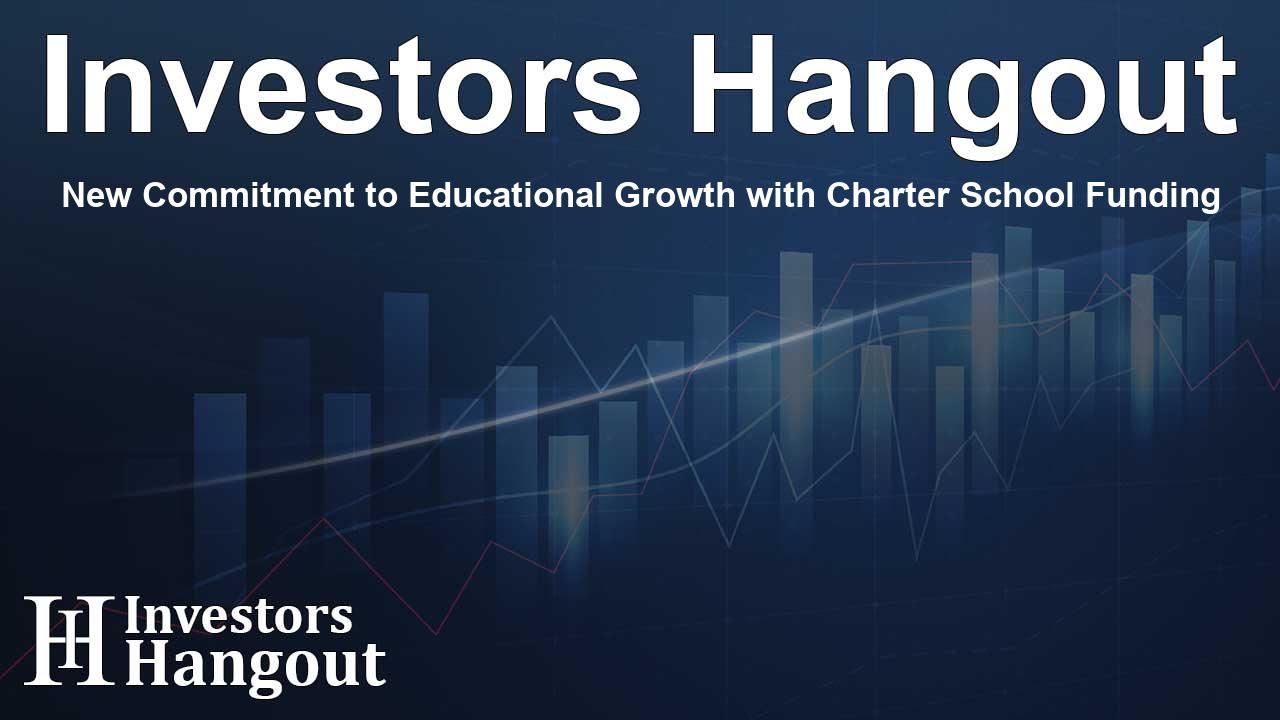New Commitment to Educational Growth with Charter School Funding

Funding Expansion for Educational Projects in NYC
In an exciting development, the New York City Regional Center has successfully closed $19 million in financing through the New Market Tax Credit program. This substantial funding will support the construction of a 60,000 square foot charter school located in the Bronx, marking the ninth charter school in New York City to benefit from this financial initiative.
Details of the New Charter School
The new school is set to accommodate around 700 students, covering grades K through 8, and will be operated by Bold Charter School, an emerging network dedicated to providing quality education in the Bronx. Designed to include 27 classrooms, additional breakout spaces, and dedicated facilities such as an art room, music room, gymnasium, and science labs, this school is positioned to greatly enhance educational opportunities for the community.
Aligning with Mission-Driven Goals
Bold Charter School, established in 2019, aims to create exemplary K-12 educational environments that inspire and empower students for lifelong success. Their commitment to academic excellence and personal growth ensures that students are well-prepared for both college and future endeavors, with a significant percentage of attendees coming from low-income households.
Utilization of New Market Tax Credit Financing
The $19 million investment is part of a $45 million allocation awarded to the NYCR-CDE, a Community Development Entity managed by the New York City Regional Center by the U.S. Department of Treasury. This initiative reflects a longstanding commitment to channeling investment into low-income communities, which have historically struggled to attract financial support.
Impact of Previous Investments
Since its establishment, NYCR-CDE has garnered seven annual tax credit awards, summing up to an impressive total of $315 million. This remarkable funding has facilitated numerous pivotal construction projects, including:
- The new headquarters for the National Urban League in Harlem.
- The redevelopment of the Major Owens Community Center in Brooklyn.
- The revitalization of the Armory Track & Field Center in Washington Heights.
- The expansion of St. John's Episcopal Hospital Center in Far Rockaway.
- The construction of eight additional charter schools.
Assisting Local Economic Growth
The New Market Tax Credit Program, initiated by Congress, aims to stimulate investment and economic growth in disadvantaged neighborhoods. By offering federal income tax credits, the program incentivizes private investors to direct their funds into communities that are often overlooked. This initiative is pivotal in reversing trends of disinvestment and fostering local economic revitalization.
About NYCRC and Its Programs
Established in 2008, the New York City Regional Center has been instrumental in fostering foreign investments through the EB-5 Immigrant Investor Program. This program not only seeks to enhance economic development through strategic investments but also offers eligible foreign investors pathways to permanent residency in the United States.
Recent Achievements and Future Prospects
Over the last 17 years, NYCRC has successfully deployed $1.58 billion in EB-5 funding and $315 million in New Market Tax Credit investments across various infrastructure and real estate endeavors, particularly within low-income areas. This capital has played a crucial role in constructing over 6.9 million square feet of new developments and renovations, positively impacting numerous neighborhoods.
Community Development and Local Benefits
Projects supported by NYCRC have led to significant job creation and greater access to essential services such as education, healthcare, and more. The local economies are invigorated through these investments, creating a ripple effect that benefits many in the community.
Frequently Asked Questions
What is the New Market Tax Credit Program?
The New Market Tax Credit (NMTC) Program was developed by Congress to promote private investment in low-income communities, stimulating economic growth and development.
How does the NMTC benefit communities?
The program helps fill financing gaps for development projects, leading to job creation and improved access to essential public services and facilities.
Who operates the new charter school in the Bronx?
The new charter school will be operated by Bold Charter School, focusing on K-8 education and addressing the needs of low-income students.
What prior projects have benefited from NMTC funding?
Previous projects include construction and renovation of schools, community centers, and significant infrastructure improvements in underserved areas.
How is NYCRC contributing to community development?
NYCRC effectively uses EB-5 and NMTC funding to support developments that foster economic growth in low-income neighborhoods, leading to job creation and improved community amenities.
About The Author
Contact Ryan Hughes privately here. Or send an email with ATTN: Ryan Hughes as the subject to contact@investorshangout.com.
About Investors Hangout
Investors Hangout is a leading online stock forum for financial discussion and learning, offering a wide range of free tools and resources. It draws in traders of all levels, who exchange market knowledge, investigate trading tactics, and keep an eye on industry developments in real time. Featuring financial articles, stock message boards, quotes, charts, company profiles, and live news updates. Through cooperative learning and a wealth of informational resources, it helps users from novices creating their first portfolios to experts honing their techniques. Join Investors Hangout today: https://investorshangout.com/
The content of this article is based on factual, publicly available information and does not represent legal, financial, or investment advice. Investors Hangout does not offer financial advice, and the author is not a licensed financial advisor. Consult a qualified advisor before making any financial or investment decisions based on this article. This article should not be considered advice to purchase, sell, or hold any securities or other investments. If any of the material provided here is inaccurate, please contact us for corrections.
